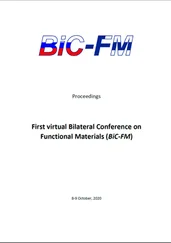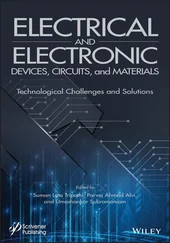175 175 Sarkar, N.K., Caicedo, R., Ritwik, P. et al. (2005). Physicochemical basis of the biologic properties of mineral trioxide aggregate. J. Endod. 31 (2): 97–100.
176 176 Reyes‐Carmona, J.F., Felippe, M.S., and Felippe, W.T. (2009). Biomineralization ability and interaction of mineral trioxide aggregate and white Portland cement with dentin in a phosphate‐containing fluid. J. Endod. 35 (5): 731–736.
177 177 Tomson, P.L., Lumley, P.J., Alexander, M.Y. et al. (2013). Hepatocyte growth factor is sequestered in dentine matrix and promotes regeneration‐associated events in dental pulp cells. Cytokine 61 (2): 622–629.
178 178 Tomson, P.L., Lumley, P.J., Smith, A.J., and Cooper, P.R. (2016). Growth factor release from dentine matrix by pulp capping agents promote pulp tissue repair‐associated events. Int. Endod. J. 50 (3): 281–292.
179 179 Gandolfi, M.G., Siboni, F., and Prati, C. (2012). Chemical‐physical properties of TheraCal, a novel light‐curable MTA‐like material for pulp capping. Int. Endod. J. 45 (6): 571–579.
180 180 Camilleri, J., Laurent, P., and About, I. (2014). Hydration of Biodentine, Theracal LC, and a prototype tricalcium silicate‐based dentin replacement material after pulp capping in entire tooth cultures. J. Endod. 40 (11): 1846–1854.
181 181 Nilsen, B.W., Jensen, E., Ortengren, U., and Michelsen, V.B. (2017). Analysis of organic components in resin‐modified pulp capping materials: critical considerations. Eur. J. Oral Sci. 125 (3): 183–194.
182 182 Gomes‐Filho, J.E., de Faria, M.D., Bernabe, P.F. et al. (2008). Mineral trioxide aggregate but not light‐cure mineral trioxide aggregate stimulated mineralization. J. Endod. 34 (1): 62–65.
183 183 Koutroulis, A., Kuehne, S.A., Cooper, P.R., and Camilleri, J. (2019). The role of calcium ion release on biocompatibility and antimicrobial properties of hydraulic cements. Sci. Rep. 9 (1): 19019.
184 184 Gandolfi, M.G., Siboni, F., Botero, T. et al. (2015). Calcium silicate and calcium hydroxide materials for pulp capping: biointeractivity, porosity, solubility and bioactivity of current formulations. J. Appl. Biomater. Funct. Mater. 13 (1): 43–60.
185 185 Yamamoto, S., Han, L., Noiri, Y., and Okiji, T. (2017). Evaluation of the Ca ion release, pH and surface apatite formation of a prototype tricalcium silicate cement. Int. Endod. J. 50 (Suppl. 2): e73–e82.
186 186 Hebling, J., Lessa, F.C., Nogueira, I. et al. (2009). Cytotoxicity of resin‐based light‐cured liners. Am. J. Dent. 22 (3): 137–142.
187 187 Jeanneau, C., Laurent, P., Rombouts, C. et al. (2017). Light‐cured tricalcium silicate toxicity to the dental pulp. J. Endod. 43 (12): 2074–2080.
188 188 Lee, H., Shin, Y., Kim, S.O. et al. (2015). Comparative study of pulpal responses to pulpotomy with ProRoot MTA, RetroMTA, and TheraCal in dogs' teeth. J. Endod. 41 (8): 1317–1324.
189 189 Bakhtiar, H., Nekoofar, M.H., Aminishakib, P. et al. (2017). Human pulp responses to partial pulpotomy treatment with TheraCal as compared with biodentine and ProRoot MTA: a clinical trial. J. Endod. 43 (11): 1786–1791.
190 190 Berzins, D.W., Abey, S., Costache, M.C. et al. (2010). Resin‐modified glass‐ionomer setting reaction competition. J. Dent. Res. 89 (1): 82–86.
191 191 Schmalz, G., Schweikl, H., Esch, J., and Hiller, K.A. (1996). Evaluation of a dentin barrier test by cyctotoxicity testing of various dental cements. J. Endod. 22 (3): 112–115.
192 192 de Souza Costa, C.A., Hebling, J., Garcia‐Godoy, F., and Hanks, C.T. (2003). In vitro cytotoxicity of five glass‐ionomer cements. Biomaterials 24 (21): 3853–3858.
193 193 Heys, R.J. and Fitzgerald, M. (1991). Microleakage of three cement bases. J. Dent. Res. 70 (1): 55–58.
194 194 Mickenautsch, S., Yengopal, V., and Banerjee, A. (2010). Pulp response to resin‐modified glass ionomer and calcium hydroxide cements in deep cavities: a quantitative systematic review. Dent. Mater. 26 (8): 761–770.
195 195 Ribeiro, A.P.D., Sacono, N.T., Soares, D.G. et al. (2019). Human pulp response to conventional and resin‐modified glass ionomer cements applied in very deep cavities. Clin. Oral Invest. 24: 1739–1748.
196 196 Kunert, M. and Lukomska‐Szymanska, M. (2020). Bio‐inductive materials in direct and indirect pulp capping – a review article. Materials (Basel) 13 (5): 1204.
197 197 Benetti, A.R., Michou, S., Larsen, L. et al. (2019). Adhesion and marginal adaptation of a claimed bioactive, restorative material. Biomater. Investig. Dent. 6 (1): 90–98.
198 198 May, E. and Donly, K.J. (2017). Fluoride release and re‐release from a bioactive restorative material. Am. J. Dent. 30 (6): 305–308.
199 199 Hashem, D., Mannocci, F., Patel, S. et al. (2019). Evaluation of the efficacy of calcium silicate vs. glass ionomer cement indirect pulp capping and restoration assessment criteria: a randomised controlled clinical trial – 2‐year results. Clin. Oral Investig. 23 (4): 1931–1939.
200 200 Hench, L.L. (2006). The story of Bioglass. J. Mater. Sci. Mater. Med. 17 (11): 967–978.
201 201 Hench, L.L., Xynos, I.D., Buttery, L.D., and Polak, J.M. (2000). Bioactive materials to control cell cycle. Mater. Res. Innovat. 3 (6): 313–323.
202 202 Xynos, I.D., Hukkanen, M.V., Batten, J.J. et al. (2000). Bioglass 45S5 stimulates osteoblast turnover and enhances bone formation in vitro: implications and applications for bone tissue engineering. Calcif. Tissue Int. 67 (4): 321–329.
203 203 Stanley, H.R., Clark, A.E., Pameijer, C.H., and Louw, N.P. (2001). Pulp capping with a modified bioglass formula (#A68‐modified). Am. J. Dent. 14 (4): 227–232.
204 204 Hanada, K., Morotomi, T., Washio, A. et al. (2019). In vitro and in vivo effects of a novel bioactive glass‐based cement used as a direct pulp capping agent. J. Biomed. Mater. Res. B Appl. Biomater. 107 (1): 161–168.
205 205 Esposito, M., Grusovin, M.G., Papanikolaou, N. et al. (2009). Enamel matrix derivative (Emdogain(R)) for periodontal tissue regeneration in intrabony defects. Cochrane Database Syst. Rev. (4): CD003875.
206 206 Torabinejad, M., Parirokh, M., and Dummer, P.M.H. (2018). Mineral trioxide aggregate and other bioactive endodontic cements: an updated overview – Part II: Other clinical applications and complications. Int. Endod. J. 51 (3): 284–317.
207 207 Rutherford, B. and Fitzgerald, M. (1995). A new biological approach to vital pulp therapy. Crit. Rev. Oral Biol. Med. 6 (3): 218–229.
208 208 McKay, W.F., Peckham, S.M., and Badura, J.M. (2007). A comprehensive clinical review of recombinant human bone morphogenetic protein‐2 (INFUSE Bone Graft). Int. Orthop. 31 (6): 729–734.
209 209 Iohara, K., Nakashima, M., Ito, M. et al. (2004). Dentin regeneration by dental pulp stem cell therapy with recombinant human bone morphogenetic protein 2. J. Dent. Res. 83 (8): 590–595.
210 210 Kikuchi, N., Kitamura, C., Morotomi, T. et al. (2007). Formation of dentin‐like particles in dentin defects above exposed pulp by controlled release of fibroblast growth factor 2 from gelatin hydrogels. J. Endod. 33 (10): 1198–1202.
211 211 Ishimatsu, H., Kitamura, C., Morotomi, T. et al. (2009). Formation of dentinal bridge on surface of regenerated dental pulp in dentin defects by controlled release of fibroblast growth factor‐2 from gelatin hydrogels. J. Endod. 35 (6): 858–865.
212 212 Zhang, D., Li, Q., Rao, L. et al. (2015). Effect of 5‐Aza‐2′‐deoxycytidine on odontogenic differentiation of human dental pulp cells. J. Endod. 41 (5): 640–645.
213 213 Paino, F., La Noce, M., Tirino, V. et al. (2014). Histone deacetylase inhibition with valproic acid downregulates osteocalcin gene expression in human dental pulp stem cells and osteoblasts: evidence for HDAC2 involvement. Stem Cells 32 (1): 279–289.
Читать дальше












